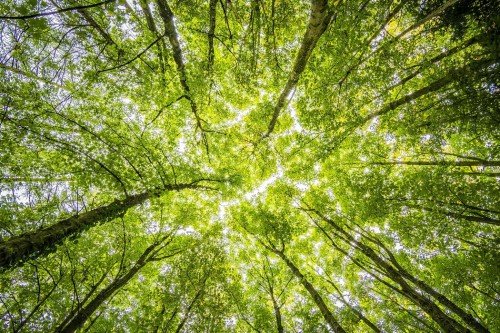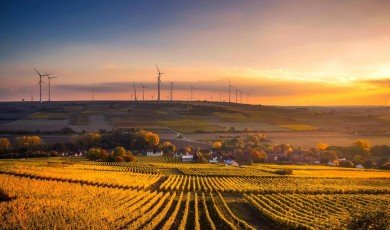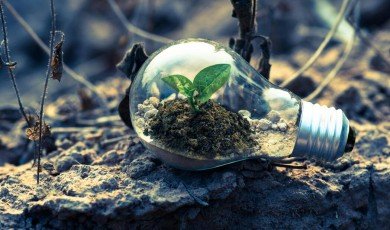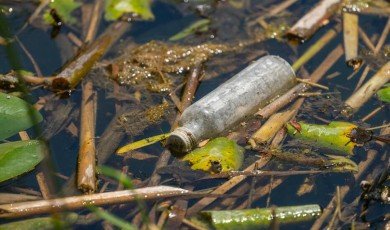
In an age where climate change headlines dominate the news cycle, it’s easy to see the environment as a collection of isolated crises — melting glaciers here, raging wildfires there, coral reefs dying silently somewhere in between. Yet beneath these separate events lies a far more intricate story: a single, interconnected system that ties every ecosystem, economy, and human life together.
The System Beneath the Symptoms
The Earth is a masterpiece of interconnection. Oceans regulate temperature and carbon cycles; forests act as lungs filtering the atmosphere; and soil microbes quietly generate the foundation of all food webs. Disturb one element, and the rest tremble in response. For instance, the deforestation of the Amazon doesn’t just reduce biodiversity — it disrupts global rainfall patterns, affecting crop yields as far away as Africa and Asia.
Scientists describe this phenomenon as systemic interdependence. The United Nations has identified that more than 80% of global biodiversity loss is directly linked to resource extraction and land-use change. These aren’t random acts of environmental harm; they’re system-wide outcomes of how human economies interact with nature.
The Cost of Thinking in Silos
For decades, environmental policy has often been reactive rather than systemic. Governments have tended to focus on individual problems — air pollution, waste management, or water scarcity — without seeing how these issues interlock. The result? Solutions that fix one problem while worsening another.
Take plastic bans, for example. While they reduce ocean pollution, some regions have shifted toward paper alternatives, driving increased deforestation. Similarly, the rush toward electric vehicles — a crucial step in decarbonization — has intensified mining for lithium and cobalt, bringing new social and ecological challenges. It’s a sobering reminder that sustainability requires systems thinking, not just good intentions.
A Global Snapshot in Numbers
To grasp the scale of the challenge, let’s look at some 2025 global metrics:
-
The planet has already warmed 1.3°C above pre-industrial levels, edging dangerously close to the 1.5°C threshold scientists call a tipping point.
-
Around 10 million hectares of forest — roughly the size of Portugal — are lost each year.
-
Over 60% of global fish stocks are now fully exploited or overfished.
-
The Global Carbon Budget reports that humanity has less than six years at current emission rates before exceeding safe climate limits.
These figures aren’t meant to spark despair — they highlight just how deeply connected every sector of modern life is to environmental outcomes. Agriculture, energy, transport, and even technology all share overlapping footprints.
Technology and Systems Thinking
Interestingly, the same technologies driving globalization are now helping us understand and repair it. Satellite-based environmental monitoring, artificial intelligence, and digital twins of ecosystems are enabling scientists to visualize environmental networks in unprecedented detail.
For instance, NASA’s Global Ecosystem Dynamics Investigation (GEDI) uses lasers to map forests in 3D, revealing how carbon is stored across biomes. AI-driven modeling helps predict how droughts, fires, or ocean heatwaves ripple through the system. This shift from local to global perspective is transforming environmental science from symptom-chasing to system-mapping.
Even the world of digital communication plays a role. High-quality educational platforms and sustainability networks — from academic journals to the occasional backlinks website promoting green innovations — now shape how quickly ideas spread across industries. In a world where data equals power, the right connections can drive planetary change.
The Curiosity of Gaia
The concept of Earth as a self-regulating organism isn’t new. In the 1970s, scientist James Lovelock proposed the Gaia Hypothesis, suggesting that living organisms interact with their inorganic surroundings to maintain conditions favorable for life. For decades, it was seen as poetic speculation. But modern Earth system science has validated much of Lovelock’s insight.
Today, we know that feedback loops — from oceanic carbon absorption to microbial methane regulation — act as balancing mechanisms. The catch? Human activities have begun overwhelming these natural feedbacks. As Lovelock warned, “Gaia is no longer able to cope with the fever we’ve caused.”
From Linear to Circular Thinking
One of the most hopeful shifts in recent years has been the rise of circular economy models. Rather than extracting, consuming, and discarding resources, circular systems aim to reuse, regenerate, and restore. The Ellen MacArthur Foundation estimates that adopting circular principles could reduce global greenhouse gas emissions by 39% by 2032 while generating trillions in economic value.
Cities like Amsterdam, Copenhagen, and Singapore are leading this transition. Amsterdam’s “Doughnut Economics” framework, for instance, measures progress not by GDP growth but by how well the city stays within ecological and social boundaries. This is systems thinking in action — balancing prosperity with planetary limits.
Policy and the Power of Cooperation
Global agreements like the Paris Climate Accord and the Kunming-Montreal Global Biodiversity Framework have begun integrating systemic approaches, acknowledging that climate, nature, and economy cannot be separated. Yet progress remains uneven. According to the World Economic Forum, less than 30% of countries have fully aligned national policies with systemic sustainability targets.
That’s where collaboration becomes crucial. Academic institutions, businesses, and civil society must share knowledge freely, building trust and learning across sectors. In the digital era, even a well-structured backlinks website supporting verified environmental research can amplify truth over misinformation — something our planet sorely needs.
The Road Ahead
Rethinking global environmental systems isn’t just about saving forests or cutting emissions. It’s about redesigning the invisible frameworks that shape how humanity lives, trades, and innovates. It means acknowledging that the fate of coral reefs may depend on financial systems, or that soil health might hinge on dietary choices.
Every product we buy, every policy we pass, and every byte of data we generate participates in this planetary web. Understanding that interdependence isn’t just science — it’s survival.
The System Is Us
Ultimately, there is no separation between human civilization and the environment. We are both creators and components of the global system we seek to heal. As technology, policy, and consciousness converge, the 21st century could become the era when humanity finally learns to operate in harmony with the systems that sustain it.
Rethinking global environmental systems isn’t a luxury — it’s the blueprint for a livable future. The sooner we see ourselves as part of the whole, the better our chances of keeping that whole alive.








